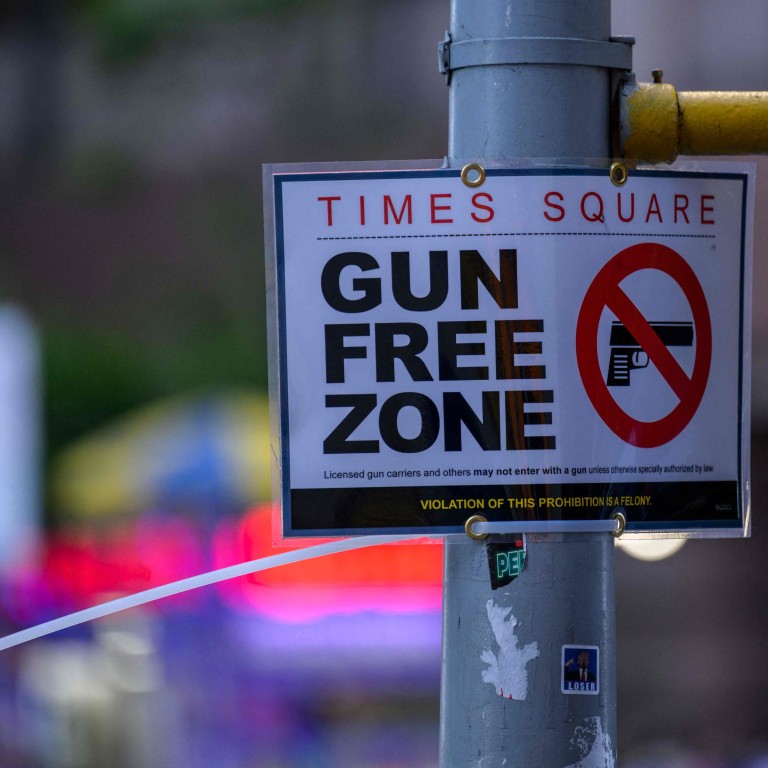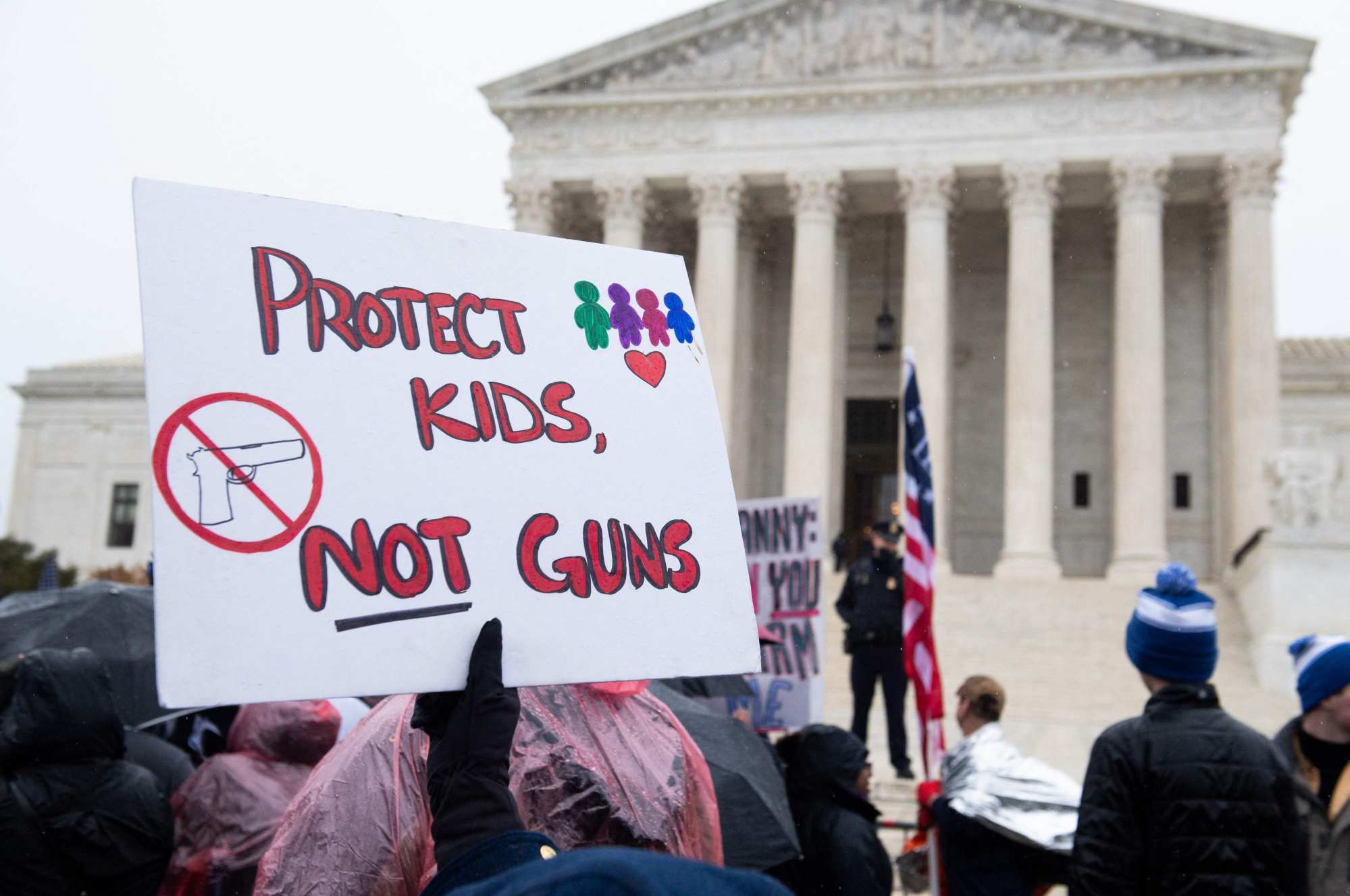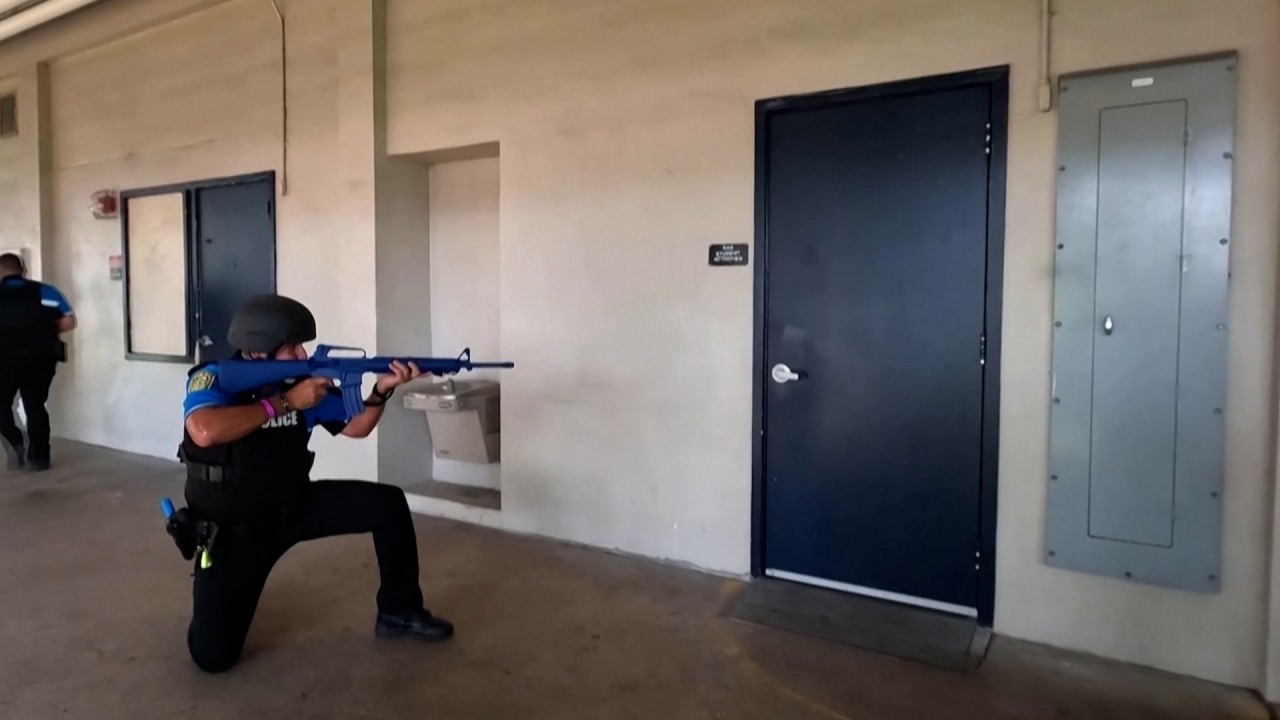
US states have ‘red flag laws’ to reduce gun violence. Why don’t they use them?
- Many states barely use the laws touted as the most powerful tool to stop gun violence, due to lack of awareness and resistance by some authorities
- Laws allow police who believe gun owners are an imminent danger to petition a judge to order firearms be surrendered or seized for an ‘emergency’ period
Chicago is one of America’s gun violence hotspots and a seemingly ideal place to employ Illinois’ “red flag” law, which allows police to step in and take firearms away from people who threaten to kill. But amid more than 8,500 shootings resulting in 1,800 deaths since 2020, the law was used there just four times.
It’s a pattern that’s played out in New Mexico, with nearly 600 gun homicides during that period and a mere eight uses of its red flag law. And in Massachusetts, with nearly 300 shooting homicides and just 12 uses of its law.
An Associated Press analysis found that many US states barely use the red flag laws touted as the most powerful tool to stop gun violence before it happens, a trend blamed on a lack of awareness of the laws and resistance by some authorities to enforce them even as shootings and gun deaths soar.
AP found such laws in 19 states and the District of Columbia were used to remove firearms from people 15,049 times since 2020, fewer than 10 per 100,000 adult residents.
Experts called that woefully low and not nearly enough to make a dent in gun violence, considering the millions of firearms in circulation and countless potential warning signs law enforcement officers encounter from gun owners every day.
“It’s too small a pebble to make a ripple”, Duke University sociologist Jeffrey Swanson, who has studied red flag gun surrender orders across the nation, said of the tally. “It’s as if the law doesn’t exist”.
“The number of people we are catching with red flags is likely infinitesimal,” added Indiana University law professor Jody Madeira, who like other experts who reviewed the findings wouldn’t speculate on how many red flag removal orders would be necessary to make a difference.
The search for solutions comes amid a string of mass shootings in Buffalo, New York, Uvalde, Texas, and Highland Park, Illinois, and a spike in gun violence not seen in decades: 27,000 deaths so far this year, following 45,000 deaths each of the past two years.
AP’s count, compiled from inquiries and Freedom of Information Law requests, showed wide disparities in how the laws were applied from state to state, county to county, most without regard to population or crime rates.
US gun makers made over US$1 billion from AR-15 sales in past decade
Florida led with 5,800 such orders, or 34 per 100,000 adult residents, but that is due mostly to aggressive enforcement in a few counties that don’t include Miami-Dade and others with more gun killings.
More than a quarter of Illinois’ slim 154 orders came from one suburban county that makes up just 7 per cent of the state’s population. California had 3,197 orders but was working through a backlog of three times that number of people barred from owning guns under a variety of measures who had not yet surrendered them.
And a national movement among politicians and sheriffs that has declared nearly 2,000 counties as “Second Amendment Sanctuaries,” opposing laws that infringe on gun rights, may have affected red flag enforcement in several states.
In Colorado, 37 counties that consider themselves “sanctuaries” issued just 45 surrender orders in the two years through last year, a fifth fewer than non-sanctuary counties did per resident. New Mexico and Nevada reported only about 20 orders combined.

“The law shouldn’t even be there in the first place”, argued Richard Mack, a former Arizona sheriff who heads the pro-gun Constitutional Sheriffs and Peace Officers Association. “You’re taking away someone’s property and means of self-defence.”
Red flag laws, most of which came into effect over the last four years, allow police officers who believe gun owners are an imminent danger to themselves or others to petition a judge to order firearms surrendered or, barring that, seized for an “emergency” period, typically two weeks.
The judge can then convene a court hearing in which petitioners present evidence to withhold weapons longer, typically a year, and the owner can argue against that.
AP’s tally counts an emergency order that is followed by a longer one as a single order if they involve the same gun owner. In rare cases where no one asked for an emergency order and only a longer one was requested and granted, that also counts as a single order. Several states reported incomplete data.
Some states also allow family members of gun owners, school officials, work colleagues or doctors to ask for gun removal orders, also known as extreme risk protection orders.
Uvalde, Texas school board fires police chief over response to mass shooting
But data reviewed by the AP show nearly all petitions in several states were initiated by police, possibly because, as several surveys have shown, few people outside law enforcement are even aware the laws exist.
The recent spike in shootings has brought renewed attention to red flag laws, with states including Alaska, Pennsylvania and Kentucky introducing legislation to add them. The Biden administration is seeking to foster wider use of red flag laws by allocating money in a newly passed federal gun law to help spread the word about such measures.
An AP-NORC poll in late July found that 78 per cent of US adults strongly or somewhat favour red flag laws, but the backlash against them has been intense in some states, particularly in rural areas.
Opponents argue that allowing judges to rule on gun seizures in initial emergency petitions before full hearings violates due process rights, though court cases claiming this have generally found the laws constitutional.


